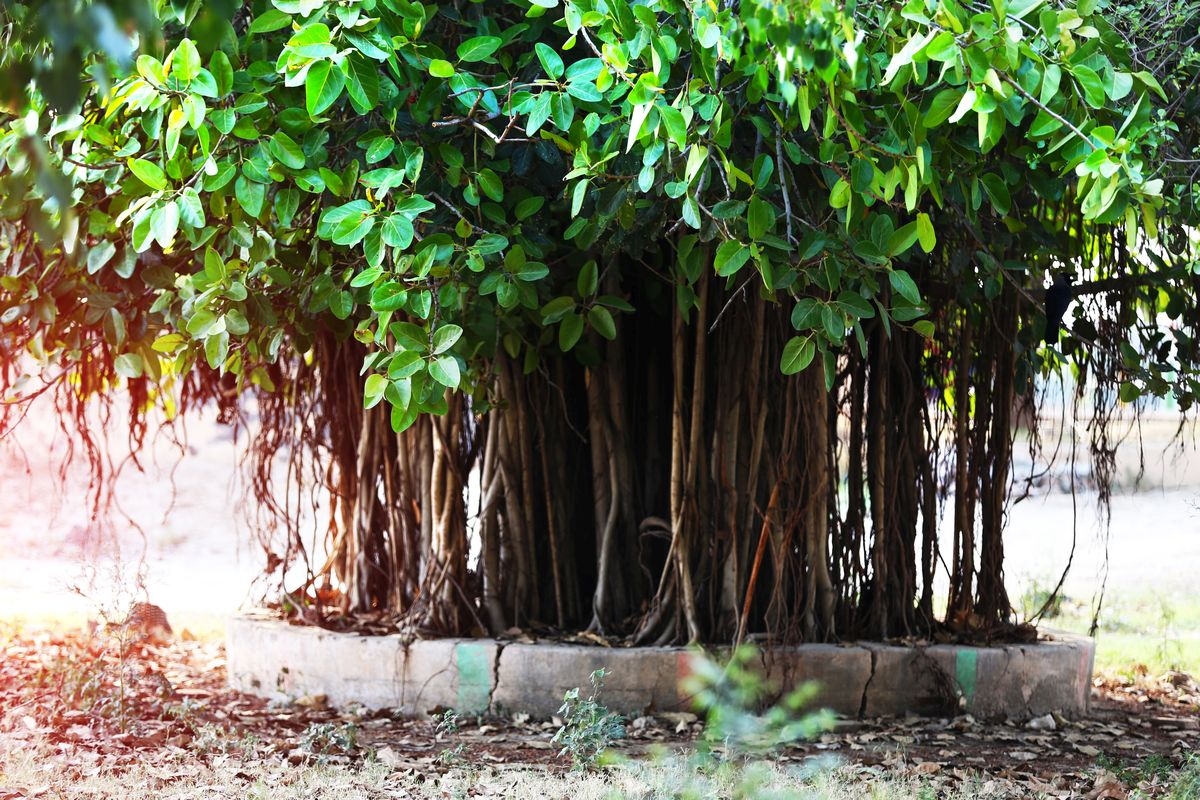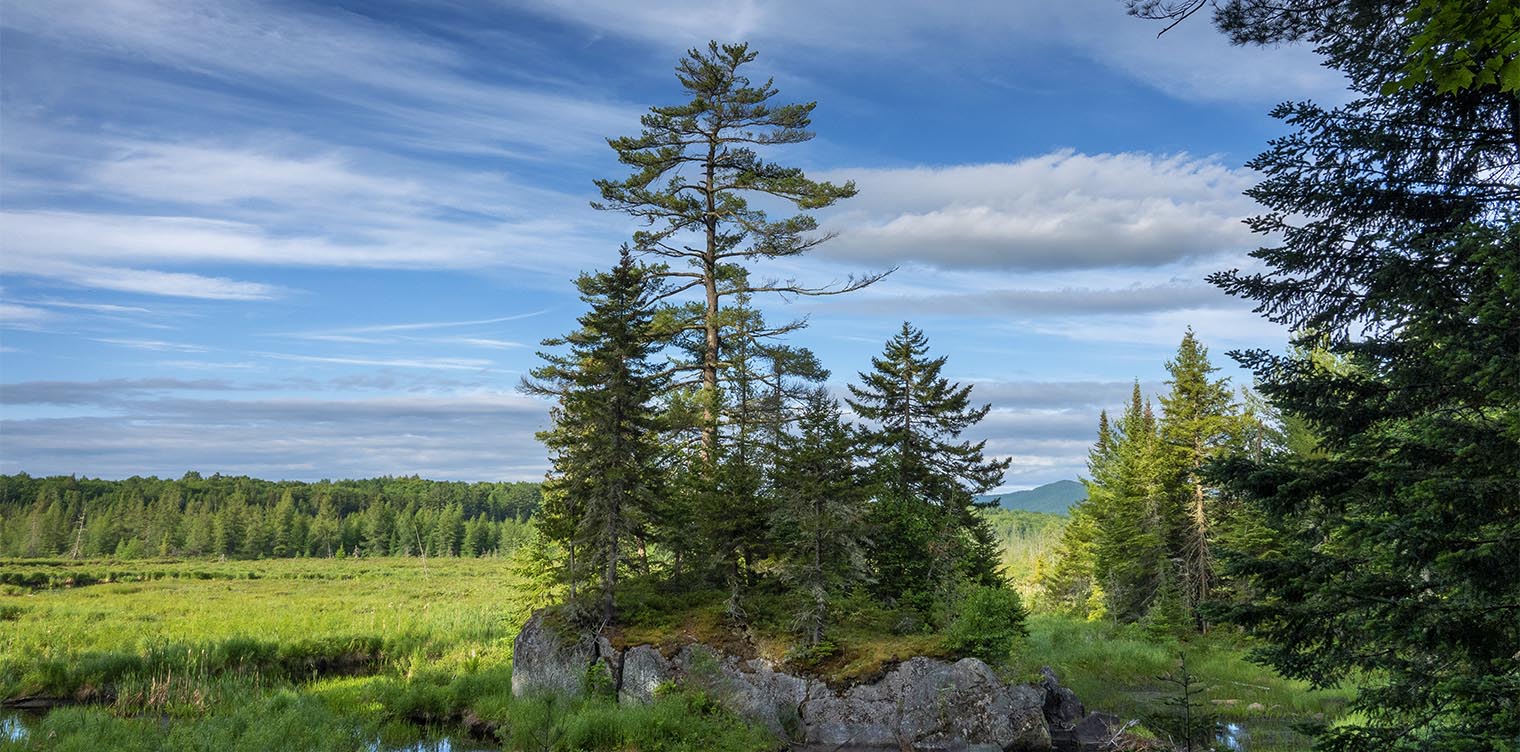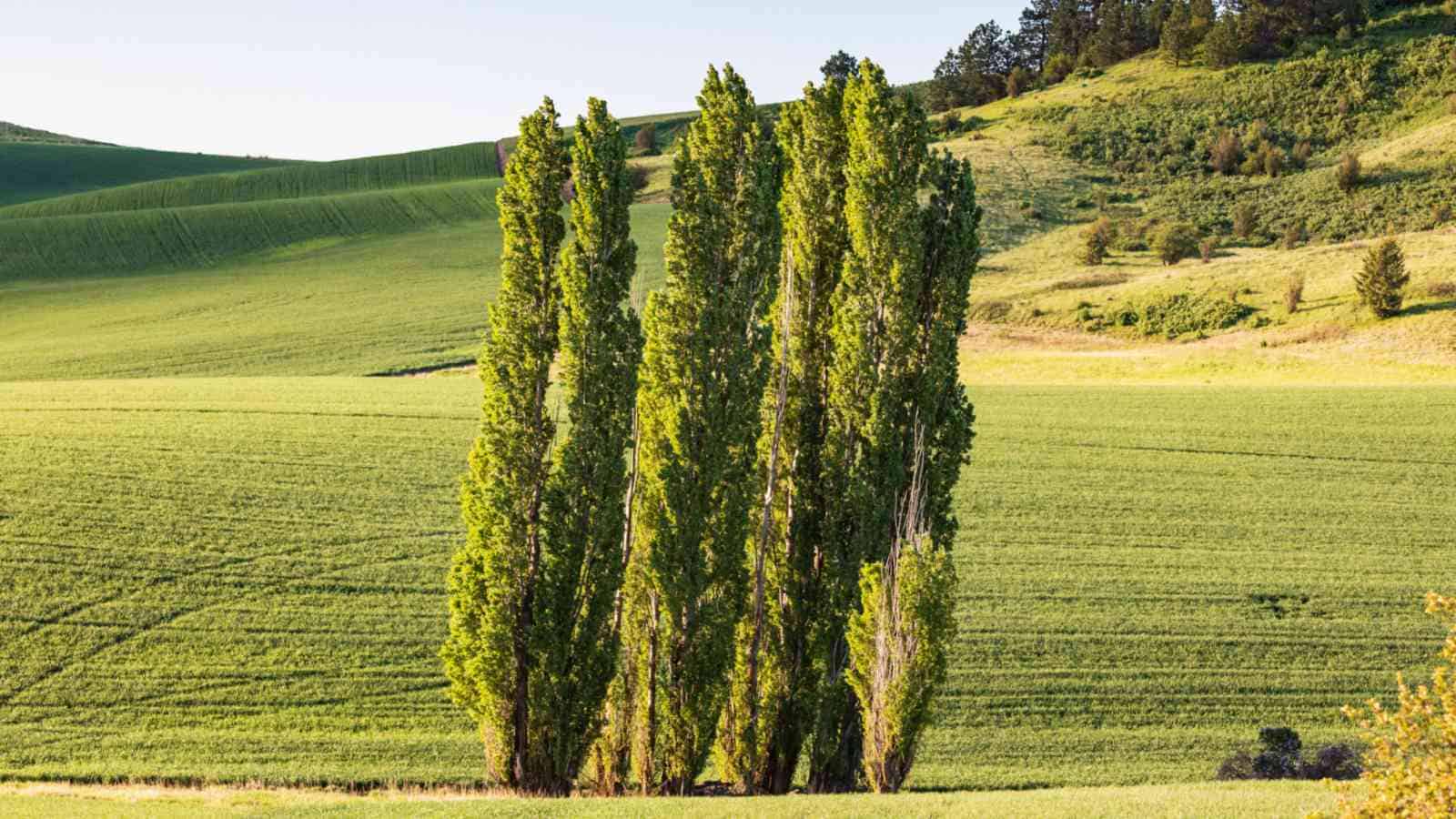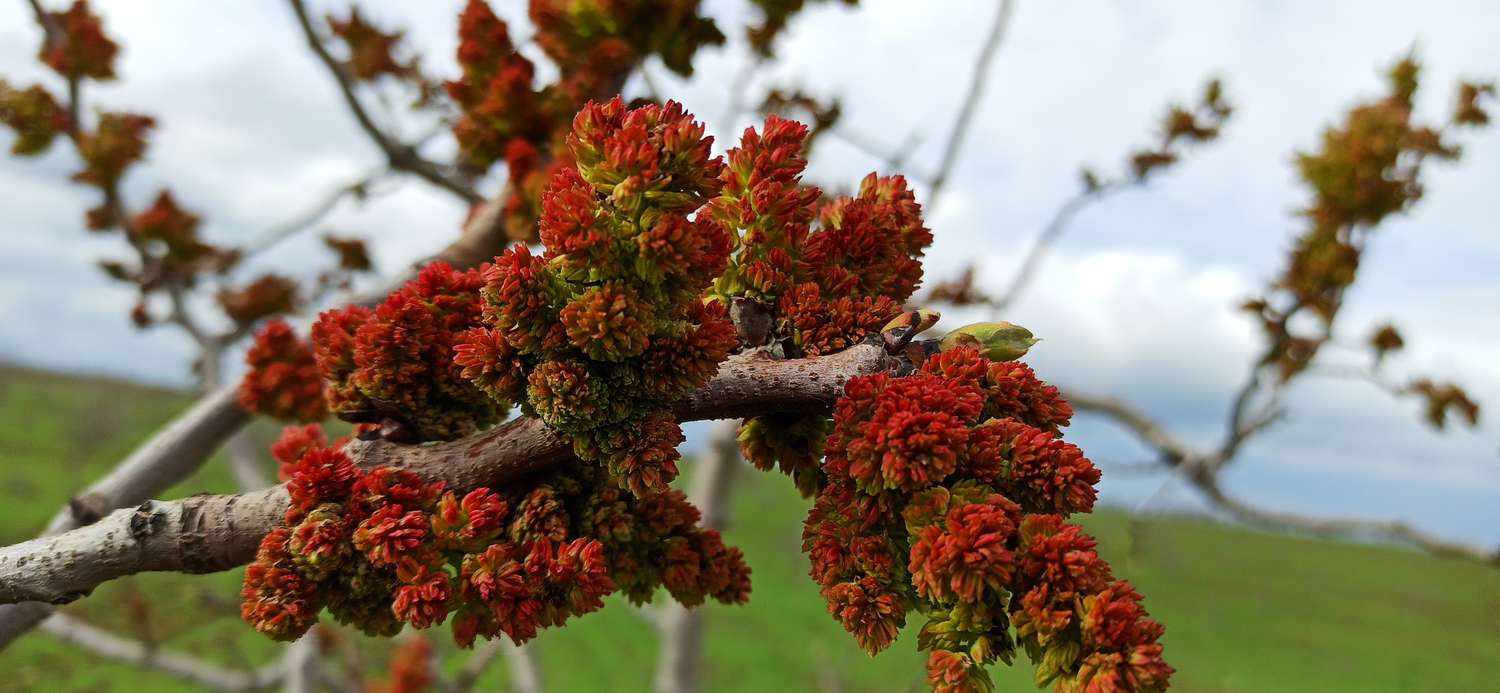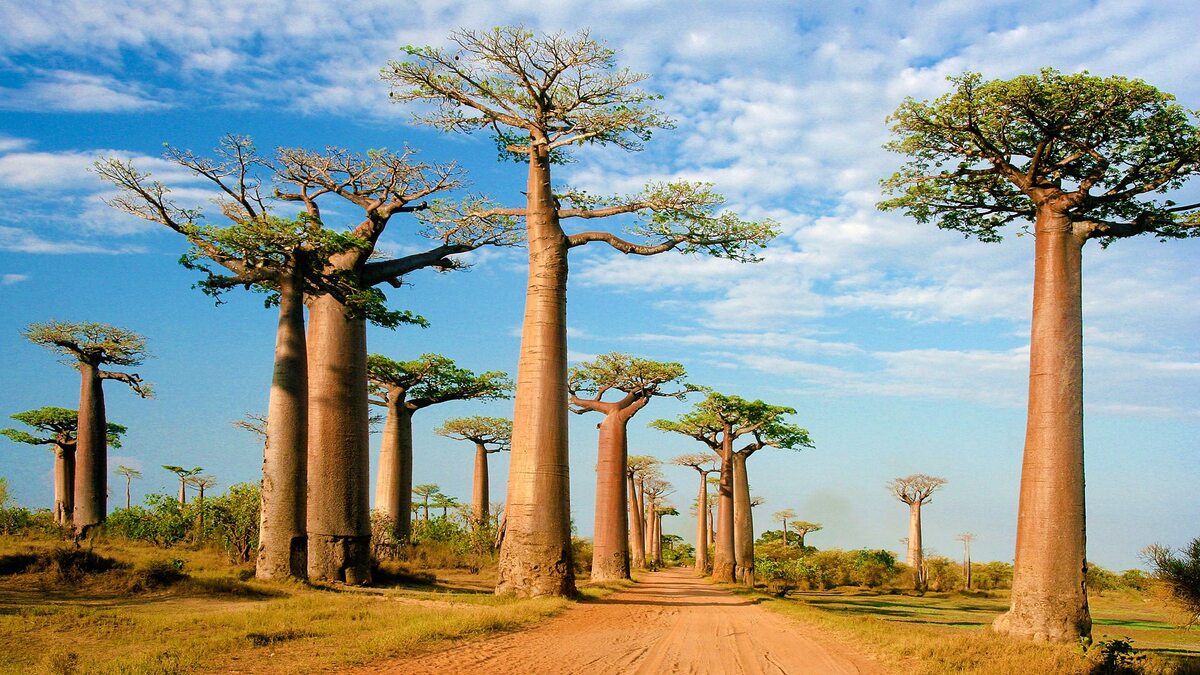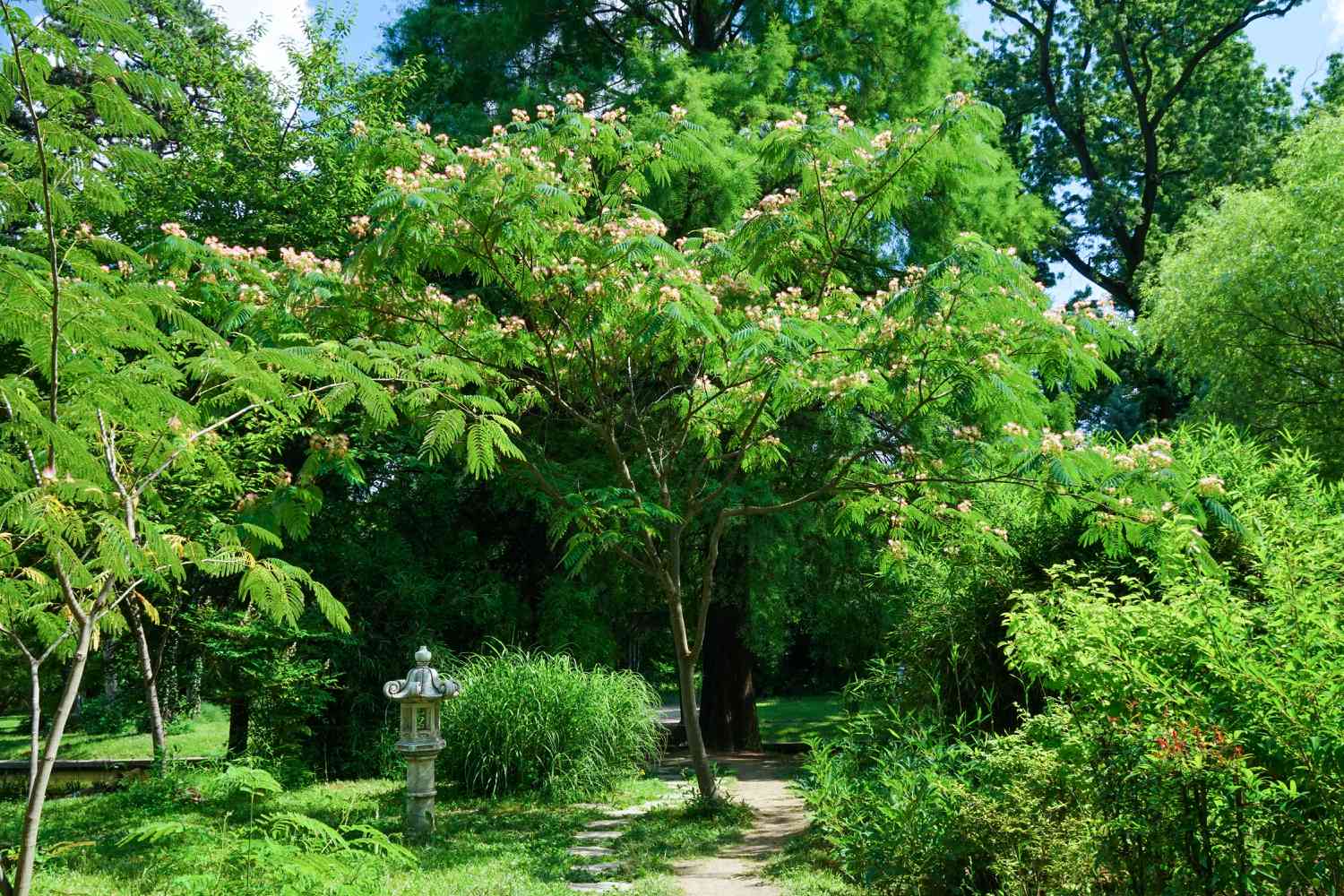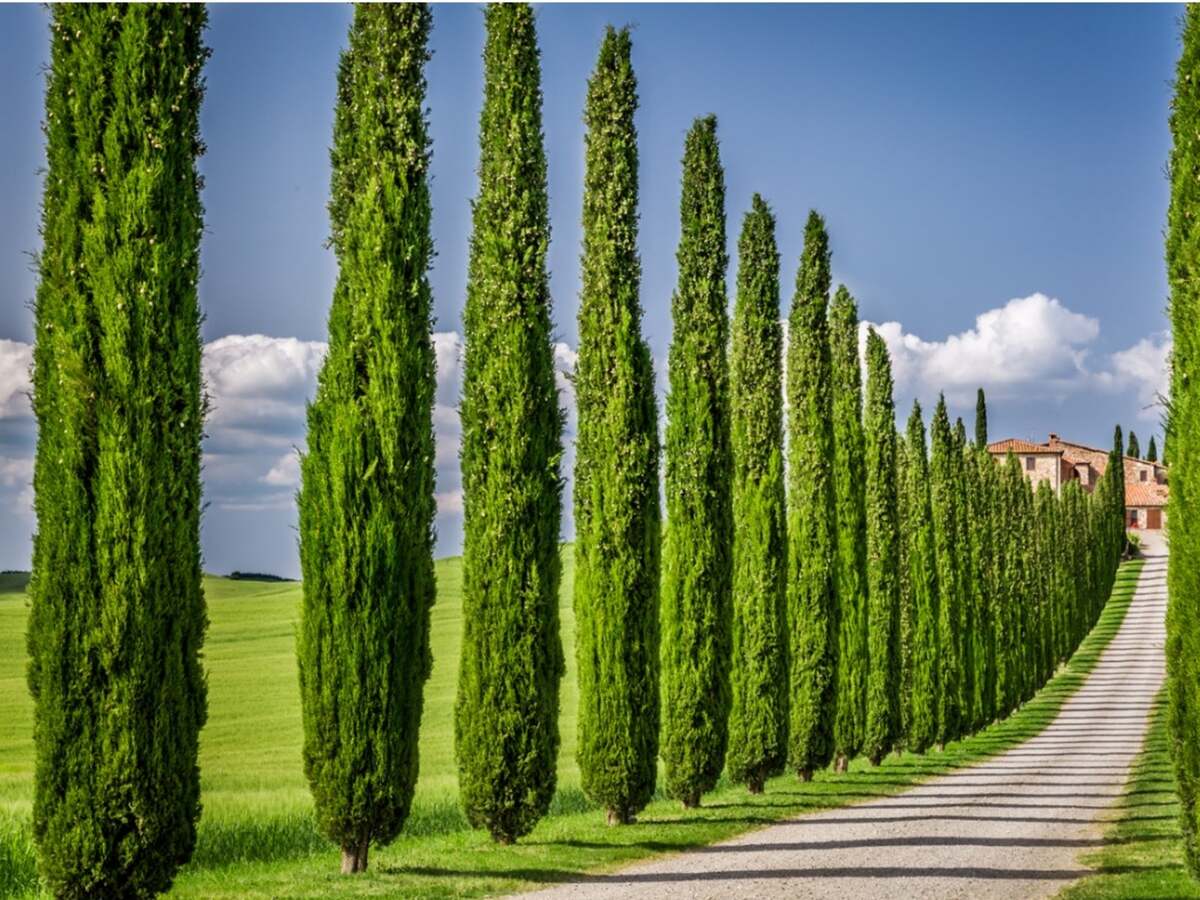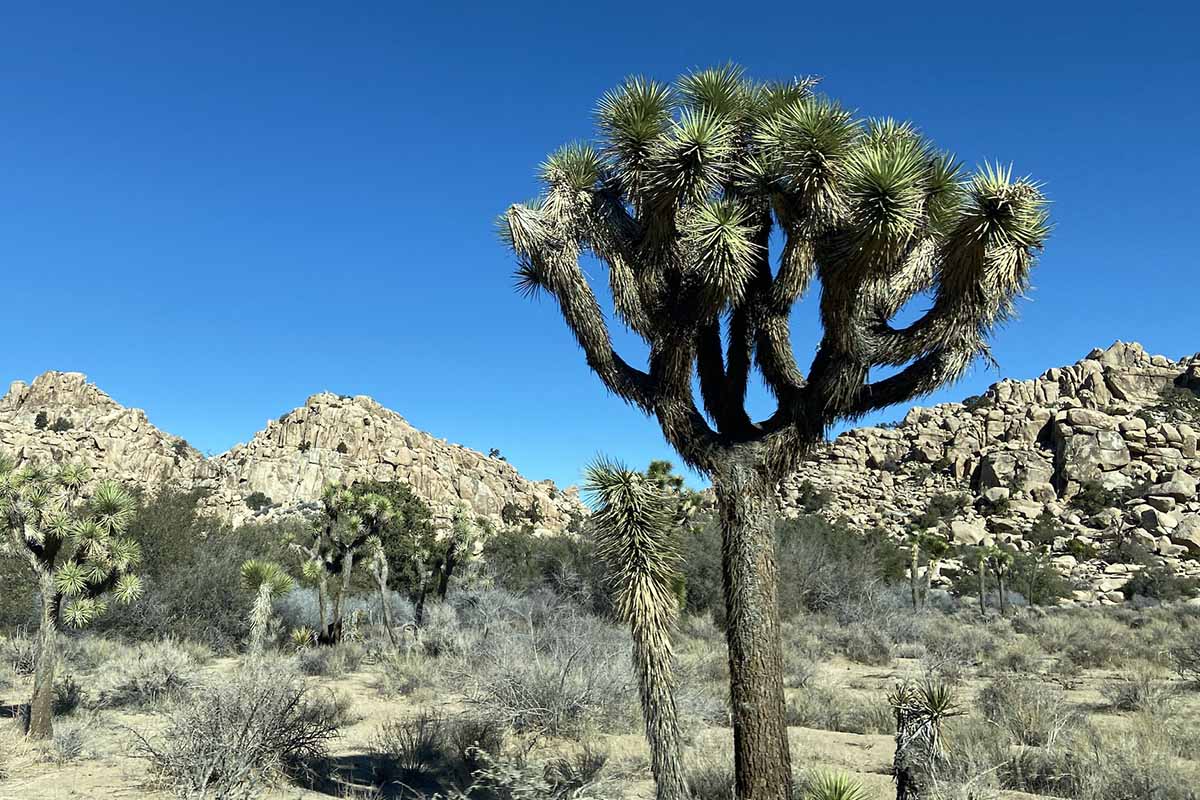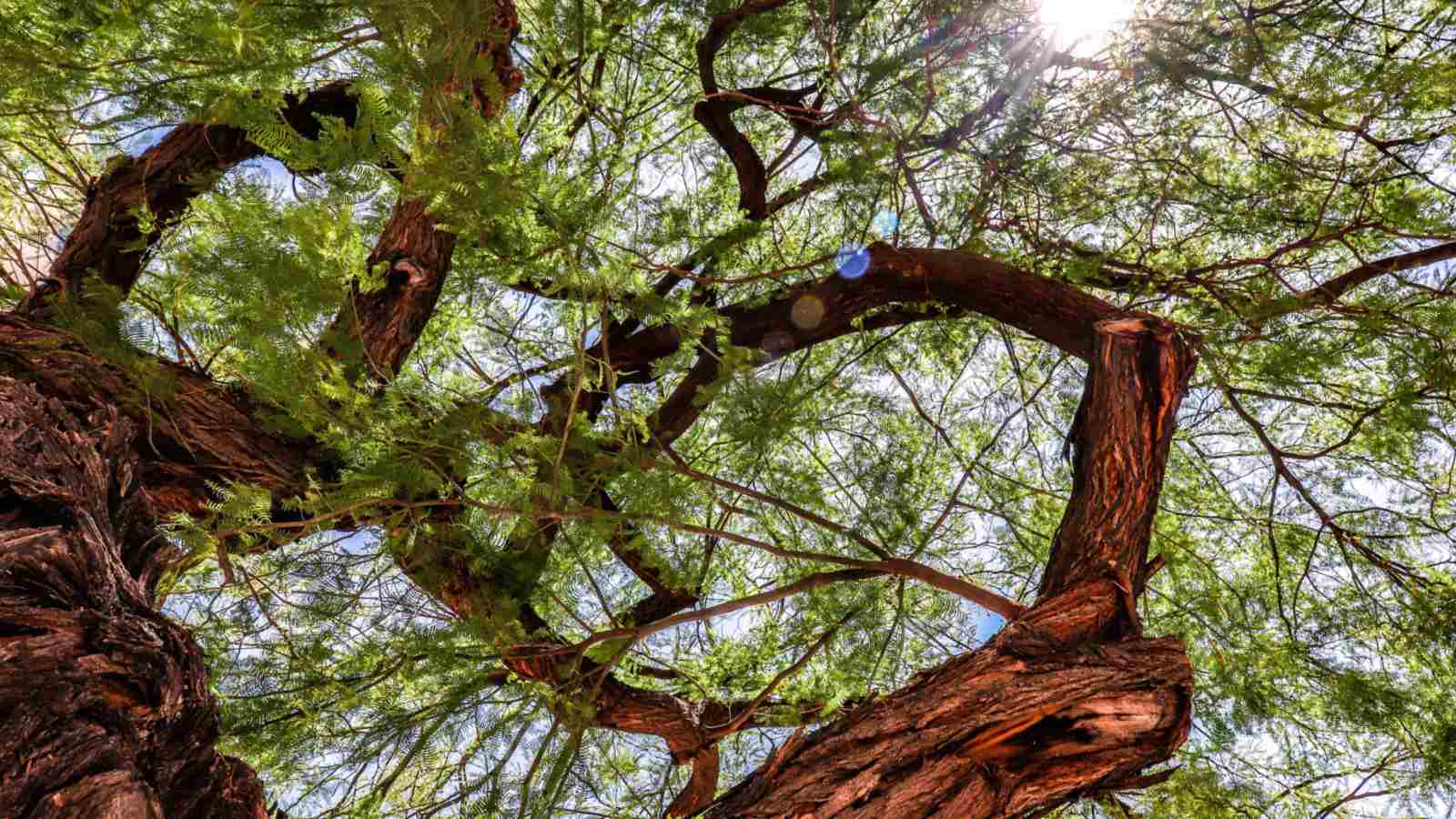Home>Gardening Techniques>Plant Care>Where Do Jacaranda Trees Grow


Plant Care
Where Do Jacaranda Trees Grow
Modified: January 22, 2024
Discover the ideal conditions for planting and caring for jacaranda trees. Learn where these stunning trees thrive and how to ensure their successful growth.
(Many of the links in this article redirect to a specific reviewed product. Your purchase of these products through affiliate links helps to generate commission for Chicagolandgardening.com, at no extra cost. Learn more)
Table of Contents
Introduction
Welcome to the world of plant care, where we explore the beauty and intricacy of taking care of various plant species. In this article, we will delve into the fascinating realm of Jacaranda trees and their specific requirements for optimal growth and health. Whether you are a passionate gardener, a plant enthusiast, or simply curious about nature’s wonders, this article will provide you with valuable insight into the cultivation and care of Jacaranda trees.
Jacaranda trees, scientifically known as Jacaranda mimosifolia, are renowned for their stunning display of vibrant purple flowers that adorn the tree’s branches during the flowering season. These magnificent trees not only add a touch of elegance and charm to any landscape but also serve as a habitat for various birds and insects, making them a vital part of the ecosystem.
Throughout this article, we will explore the climate requirements for Jacaranda trees, their geographical distribution, and their native range. Additionally, we will delve into the cultivation of Jacaranda trees outside their native range, as well as highlight notable regions where these trees thrive.
Whether you live in a region suitable for growing Jacaranda trees or are considering introducing these beauties to your landscape, understanding their specific needs will ensure their long-lasting health and beauty. So, without further ado, let us embark on a journey to unravel the secrets of Jacaranda tree care!
Climate Requirements for Jacaranda Trees
Jacaranda trees thrive in regions with a warm and tropical or subtropical climate. They are best suited to areas with mild winters and long, hot summers. These trees require a significant amount of sunlight to flourish, so it is essential to choose a planting location that receives ample direct sunlight throughout the day.
The ideal temperature range for Jacaranda trees is between 60°F to 90°F (15°C to 32°C). They can tolerate slightly cooler temperatures for short periods but are susceptible to frost damage. Therefore, it is crucial to protect young trees from freezing temperatures and provide proper insulation during colder months.
Adequate rainfall is also vital for the healthy growth of Jacaranda trees. They prefer well-drained soil and are moderately drought-tolerant once established. However, prolonged periods of drought can lead to stress and affect their overall health. Therefore, regular watering during dry spells is necessary, particularly for young trees.
It is worth noting that Jacaranda trees are not suitable for areas with high humidity, as excessive moisture can lead to fungal diseases. Good air circulation around the trees is essential to prevent leaf diseases and maintain optimal health.
Depending on the specific climate of your region, additional measures such as mulching and careful monitoring of soil moisture may be required to ensure the trees’ well-being. It is advisable to consult with local gardening experts or horticulturists for specific recommendations based on your location.
Now that we understand the climate requirements for Jacaranda trees, let us explore their geographical distribution and where they are naturally found in the world.
Geographical Distribution of Jacaranda Trees
Jacaranda trees are native to South America, specifically the tropical and subtropical regions of Argentina, Brazil, Bolivia, and Paraguay. These countries host the natural habitats where Jacaranda mimosifolia thrives, taking advantage of the favorable climate and soil conditions.
Within their native range, Jacaranda trees can be found in various ecosystems, including rainforests, savannas, and riverbanks. They have become an integral part of the natural landscape, adding bursts of color and providing shelter for wildlife.
As explorers and traders introduced Jacaranda trees to different parts of the world, they began to thrive in other regions as well. Today, they can be found in many countries with suitable climates, especially in regions with Mediterranean or subtropical climates.
One notable area where Jacaranda trees have flourished outside their native range is South Africa. These trees are a beloved symbol of the city of Pretoria, where their vibrant purple blooms grace the streets and parks, creating a breathtaking spectacle during the flowering season.
Other regions where Jacaranda trees have successfully established themselves include parts of Australia, California in the United States, the Mediterranean countries, and parts of Asia such as India and Sri Lanka.
The adaptability of Jacaranda trees to different climates and soil types has contributed to their widespread distribution across the globe. Their stunning beauty and ability to thrive in diverse environments have made them a favorite choice for ornamental planting.
Now that we have explored the native range and geographical distribution of Jacaranda trees, let us delve deeper into the cultivation of these trees outside their natural habitats.
Native Range of Jacaranda Trees
Jacaranda trees, scientifically known as Jacaranda mimosifolia, are native to the tropical and subtropical regions of South America. Specifically, they can be found in Argentina, Brazil, Bolivia, and Paraguay, where they are a natural part of the ecosystem.
In their native range, Jacaranda trees thrive in a variety of habitats, including rainforests, savannas, and riverbanks. These trees have adapted to the warm and humid climate of these regions, with temperatures ranging from 60°F to 90°F (15°C to 32°C).
The fertile soils found in their native range also contribute to the growth and health of Jacaranda trees. These soils provide the necessary nutrients and excellent drainage that Jacaranda trees require for optimal growth. The combination of a favorable climate and suitable soil conditions allows Jacaranda trees to reach their full potential in their natural habitats.
In these regions, Jacaranda trees play a vital role in the ecosystem. They provide shelter and food for various bird species and insects. The vibrant purple flowers that adorn the branches of Jacaranda trees attract pollinators, aiding in the reproduction of other plant species as well.
The native range of Jacaranda trees showcases the beauty and resilience of these majestic trees. They have a long-standing presence in the South American landscape, shaping the natural environment and captivating the hearts of people with their stunning displays of purple blooms.
Now that we have explored the native range of Jacaranda trees, let us move on to discuss how these trees have been cultivated outside of their natural habitats.
Cultivation Outside of Native Range
Due to their stunning beauty and ornamental value, Jacaranda trees have been cultivated outside of their native range and successfully adapted to various climates around the world. These trees have found homes in regions with Mediterranean, subtropical, and even some temperate climates.
When cultivating Jacaranda trees outside their native range, it is important to consider the specific climate conditions of the region. These trees require a warm and sunny environment to thrive. In regions with cooler temperatures, it may be necessary to provide protection during colder months, such as covering young trees to prevent frost damage.
The soil composition is another crucial factor in the successful cultivation of Jacaranda trees. They prefer well-drained soil that is rich in nutrients. If the soil in your area is not suitable, it may be necessary to amend it with organic matter, such as compost or well-rotted manure, to improve its fertility and drainage.
Watering is essential during the establishment phase of Jacaranda trees, especially in regions with less rainfall. However, it is important to strike a balance and avoid overwatering, as excessive moisture can lead to root rot. Once the trees are established, they are moderately drought-tolerant, but regular watering during dry spells is still necessary.
Pruning plays an important role in the cultivation of Jacaranda trees, not only for maintaining their shape and size but also to encourage healthy growth and flowering. Pruning should be done in late winter or early spring, before the new growth appears. It is recommended to remove any dead, damaged, or crossing branches, as well as to thin out the canopy to improve air circulation.
With proper care and attention to climate and soil requirements, Jacaranda trees can thrive outside their native range, adding a touch of splendor to gardens, parks, and streets around the world.
Now that we have explored the cultivation of Jacaranda trees outside their native range, let us move on to discover some notable regions where these trees are particularly abundant.
Notable Regions Where Jacaranda Trees Grow
Jacaranda trees have captivated people all over the world with their stunning purple blooms and graceful presence. While they can be found in various regions where the climate and soil conditions are suitable, there are some notable regions where these trees are particularly abundant and cherished.
Pretoria, South Africa is often referred to as the “Jacaranda City” due to the sheer number of Jacaranda trees lining its streets and filling its parks. During the flowering season, typically in October, the city becomes a breathtaking sight as the trees explode with vibrant purple blooms, creating a magical scenery that attracts visitors from near and far.
The city of Grafton in New South Wales, Australia is another region renowned for its Jacaranda trees. The annual Jacaranda Festival held in Grafton celebrates the blooming of these majestic trees, with events, parades, and festivities that showcase their beauty and significance to the local community.
Other notable regions where Jacaranda trees grow abundantly include the coastal regions of California in the United States, where they add a touch of exotic beauty to the landscape, and the Mediterranean countries like Spain, Italy, and Greece, where their vibrant blooms create a delightful contrast against the blue skies.
In addition, Jacaranda trees are also found in parts of India, particularly in the cities of Mumbai, Bengaluru, and Chandigarh, where they are widely planted along the streets and in parks, spreading their purple beauty throughout the urban landscapes.
These regions have become synonymous with the enchanting presence of Jacaranda trees. They have embraced these stunning trees, incorporating them into the local culture and making them an iconic part of the landscape.
Now that we have explored some notable regions where Jacaranda trees thrive, let us further examine the factors that can affect the growth and overall health of these magnificent trees.
Factors Affecting Growth and Health of Jacaranda Trees
While Jacaranda trees are known for their resilience and adaptability, several factors can influence their growth and overall health. Understanding these factors is crucial to ensure the well-being of these magnificent trees.
1. Climate: The climate plays a significant role in the growth of Jacaranda trees. They thrive in warm and tropical or subtropical climates with mild winters and long, hot summers. Cold temperatures and frost can damage the trees, so it is important to protect them during colder months in regions with cooler climates.
2. Sunlight: Jacaranda trees require ample sunlight to flourish. Planting them in a location that receives direct sunlight for a significant portion of the day is essential for their growth and flowering. Insufficient sunlight can weaken the trees and hinder their ability to bloom.
3. Soil: Jacaranda trees prefer well-drained soil that is rich in nutrients. The soil should not be overly compacted or waterlogged, as this can lead to root rot. Amending the soil with organic matter, such as compost, can improve its drainage and fertility, providing an optimal growing environment for the trees.
4. Water: While Jacaranda trees are moderately drought-tolerant once established, they still require regular watering, particularly during dry spells. However, overwatering can lead to root rot and other issues. Finding the right balance by providing enough water to keep the soil moist but not saturated is essential for their health.
5. Pruning: Pruning is important for maintaining the shape, size, and health of Jacaranda trees. Regular pruning, done in late winter or early spring, helps remove dead or damaged branches, improves air circulation within the canopy, and stimulates new growth and flowering.
6. Pests and Diseases: Jacaranda trees are generally resistant to pests and diseases. However, they can still be prone to certain issues such as aphid infestations, which can be controlled with organic insecticides. Proper care and maintaining good overall tree health can prevent most pest and disease problems.
By considering these factors and providing the necessary care, Jacaranda trees can thrive and become a stunning centerpiece in any landscape. Regular monitoring, appropriate watering, and periodic pruning will help ensure the longevity and vitality of these captivating trees.
Now that we have explored the factors affecting the growth and health of Jacaranda trees, let us conclude our journey through the world of plant care.
Conclusion
Jacaranda trees are a true wonder of nature, captivating us with their magnificent purple blooms and graceful presence. Cultivating and caring for these trees requires a deep understanding of their specific climate requirements, geographical distribution, and factors that affect their growth and health.
Whether in their native range of South America or in regions around the world where they have been successfully cultivated, Jacaranda trees bring beauty and splendor to landscapes. They thrive in warm and tropical or subtropical climates, requiring ample sunlight, well-drained soil, and careful watering.
Notable regions such as Pretoria in South Africa, Grafton in Australia, or coastal regions in California have become synonymous with the enchanting presence of Jacaranda trees, gracing streets, parks, and gardens with their vibrant purple blooms.
Factors such as climate, sunlight, soil, water, and pruning play crucial roles in the growth and health of Jacaranda trees. By monitoring these factors and providing proper care, including regular watering, nutrient-rich soil, and occasional pruning, these trees can thrive and delight us with their beauty for many years to come.
As you embark on your journey of plant care, whether with Jacaranda trees or any other species, remember to be in tune with nature, observe its nuances, and provide the necessary care and attention. The world of plants offers an endless array of wonders, and by nurturing and caring for them, we can create vibrant and breathtaking landscapes while connecting with the beauty of the natural world.
So, go forth and embark on your plant care journey, and may your efforts be rewarded with the flourishing of magnificent Jacaranda trees and a deep appreciation for the wonders of nature.
